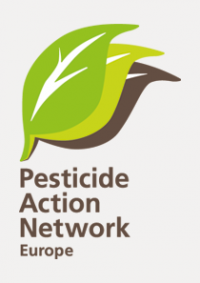To: Members of the ScoPAFF committee – Section "Phytopharmaceuticals - Legislation"
Subject: EU Standing committee on pesticides (ScoPAFF 21/22 October) – herbicide Flumioxazin – Calling upon Member States to oppose the European Commission’s renewal proposal
Dear Madam/Sir,
On 21/22 October, at the EU Standing committee on pesticides (SCoPAFF) you will be invited to vote on the European Commission proposal for a renewal of approval of flumioxazin for 15 years. This substance, however, does not meet the legal requirements to be re-approved according to Article 4(1) of Reg (EC) 1107/2009 and to remain on the European market. In accordance with the above provisions, we urge you to reject this proposed renewal.
Approved since 2003, flumioxazin’s approval period has been granted seven administrative extensions, resulting in a 9-year prolongation of market access. Although pesticides can normally be granted approval for a period of up to a maximum of 15 years, flumioxazin’s approval period is now equivalent to 19 years (until 2022). Such prolonged approval was made possible despite numerous data gaps in the dossier, which reflect various areas of concerns for the protection of health and the environment. The European Parliament has expressed severe concerns about the process through several objections voted in plenary.
Flumioxazin was classified in 2014 as toxic for reproduction Cat 1B. Therefore, it should logically have been banned before being granted all the above-mentioned extensions, in line with Article 4.1 Reg. (EC) 1107/2009 (Annex II, point 3.6.4). Exposure to the substance has been associated with developmental toxicity and teratogenicity in experimental animals (rats), as well as toxicity to endocrine organs. Nevertheless, in 2019 its hazard classification was downgraded by ECHA to toxic for reproduction Cat. 2 on the questionable ground1 of “non relevance for humans”. As a result, it has remained in the market, since category 2 reprotoxicants are permitted for use in pesticide products.
No experimental evidence was provided to confirm this “non relevant for humans” scheme which was developed by Boobis et al (who worked for the industry lobby ILSI). See PAN Europe report Industry writing its own rules.
Flumioxazin is also classified as very toxic for aquatic organisms, with long-term effects, and is highly suspected of endocrine disruption.
Pursuant to Regulation (EC) 1107/2009 and (EU) 2018/605, an active substance cannot be proposed to renewal if its endocrine disrupting properties cannot be ruled out with certainty. EFSA’s conclusions however revealed that for flumioxazin, the data provided by the industry applicant was insufficient to comprehensively assess whether the corresponding approval criteria laid down in point 3.6.5 and point 3.8.2 of Annex II of Regulation (EC) No 1107/2009 were met and therefore conclude on the substance’s endocrine disrupting properties. The Authority itself stresses that ED-assessment for humans, wild mammals, and non-target organisms “remains as an issue that could not be finalised due to a lack of data”2.
According to Reg (EU) 2018/1659 for the renewal of pesticide active substances, when the Commission considers that additional information is necessary to assess whether the criteria for endocrine disruption are met, it may request to EFSA to ask the applicant to submit this missing information and carry an assessment. Despite the clear EFSA conclusions regarding the data gaps preventing the completion of the ED assessment, the Commission however decided to anyways propose a renewal for the approval of the substance for 15 years, the maximum period possible, and to allow the applicant to provide the missing studies at a later extend.
The European Commission's proposal for renewal is incomprehensible. It is in violation with the provisions of the European law on pesticides and in contradiction with Commission’s own commitments under the European Green Deal, namely “to ensure that endocrine disruptors are recognised in a timely manner and that exposure of humans, and the environment is minimised.3” Such proposal also contradicts the objective of the Farm to Fork Strategy to transform agricultural systems, by replacing, among others, synthetic pesticides with solutions that work with nature. A wide range of non-chemical alternatives and methods to flumioxazin exist. EFSA itself acknowledges their existence (crop cover/mulching, tillage, mechanical weeding, crop rotation etc.), and their practical recourse in the field (practised on 10–50% acreage) for several uses around the EU (sunflowers, winter wheat, maize, olives, citrus, bulb onions, carrots etc4.
A cross-party coalition of Members of the European Parliament recently called on the Commission to withdraw this renewal proposal, which is in breach with the precautionary principle and Regulation (EC) 1107/2009, and instead to ban the substance from the EU market.
We respectfully ask you to consider this case under the light of the important data gaps of the renewal dossier as well as the existing legal obligations of the European Commission, and as a result to oppose the renewal of flumioxazin.
Yours faithfully,
Salomé Roynel, PAN Europe
Angeliki Lyssimachou, HEAL
EFSA, Updated peer review of the pesticide risk assessment of the active substance flumioxazin, 7.09.2020, doi: 10.2903/j.efsa.2020.6246.
COM, Chemical Strategy for Sustainability: Toward a toxic-free environment, 14.10.2020 COM(2020) 667 final.
EFSA, Evaluation of data concerning the necessity of flumioxazin as a herbicide to control a serious danger to plant health which cannot be contained by other available means, including non-chemical methods, 15.12.2016, doi: 10.2903/j.efsa.2017.4688.
